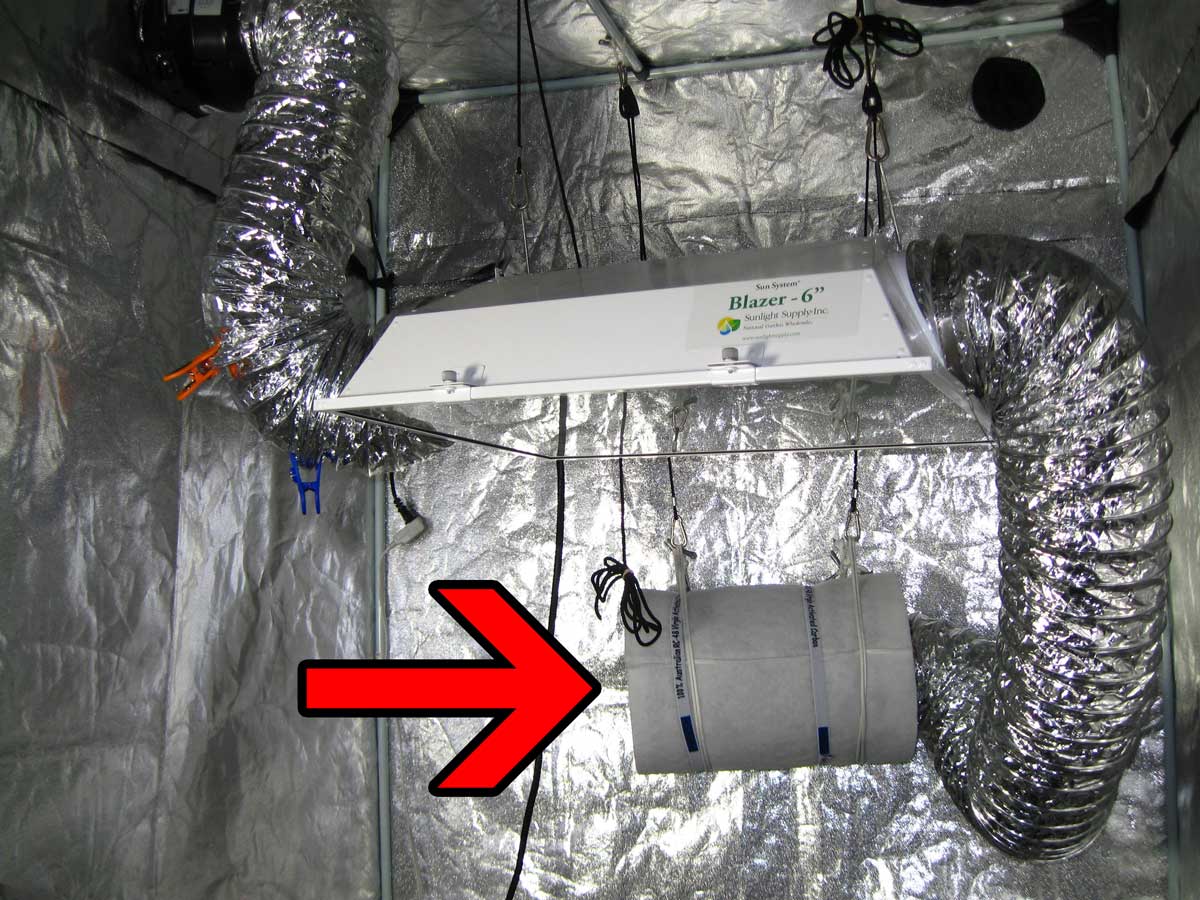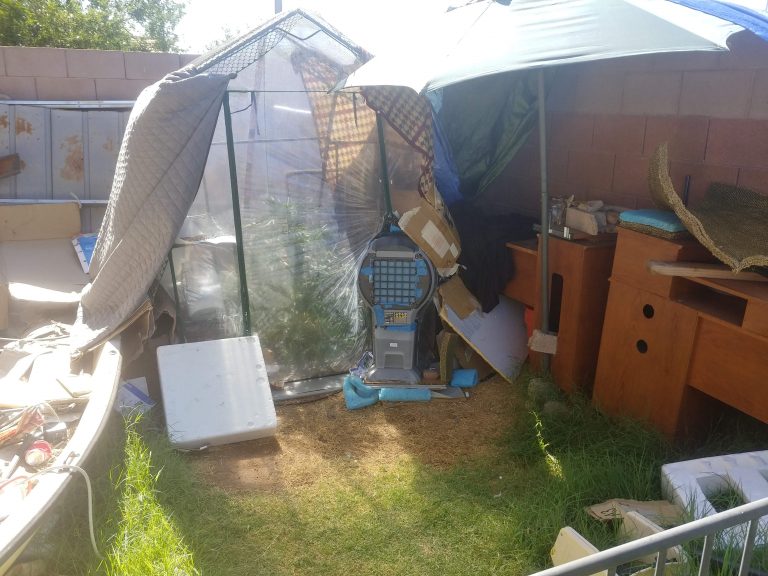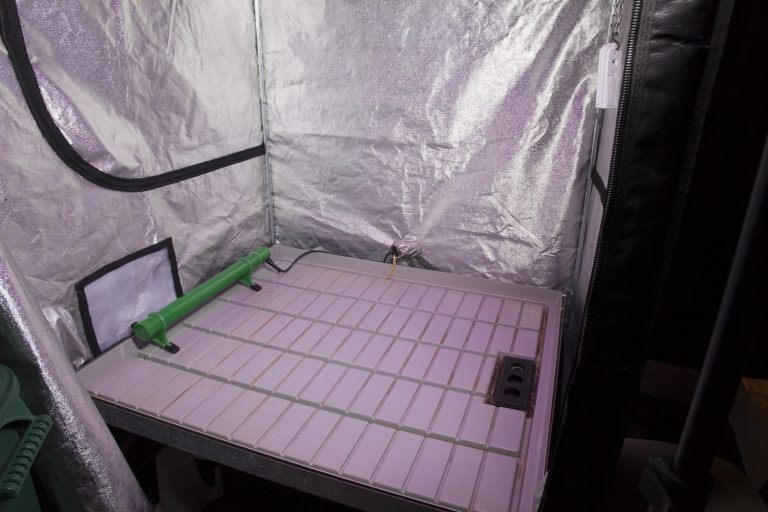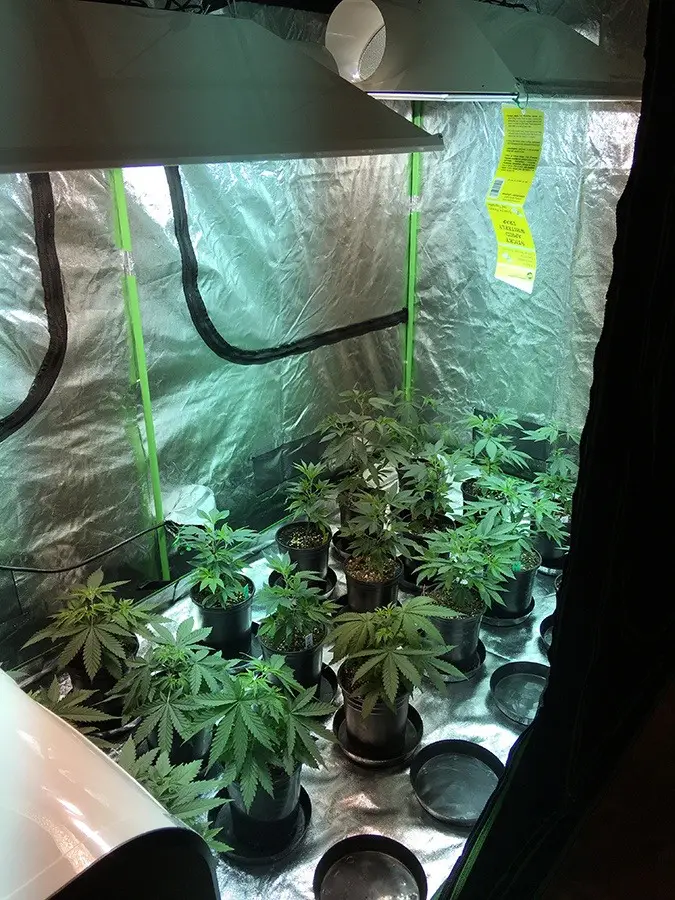How to Set Up Grow Tent Ventilation
A grow tent is a great way to create a controlled environment for your plants, but you need to make sure that you have proper ventilation set up in order to keep your plants healthy. Grow tents typically have one or two vents near the top, and you’ll need to install an exhaust fan in one of them. You can also use an inline fan if you want more control over the airflow.
- Choose a location for your grow tent
- Make sure that the area is well-ventilated and free from any potential hazards
- Set up your grow tent according to the manufacturer’s instructions
- Install an exhaust fan in the grow tent, making sure that it is properly ventilated
- Connect the exhaust fan to a duct system or ventilation system that will allow fresh air to enter the grow tent while exhausted air is being vented out
- Turn on the exhaust fan and make sure that it is working properly
- Adjust the speed of the fan as needed to ensure proper ventilation within the grow tent
How to Set Up a Ventilation System for a LED Grow Tent
How Do I Ventilate My Grow Tent?
When growing plants indoors in a grow tent, it is important to have proper ventilation. Ventilation helps to circulate fresh air and keep the temperature and humidity at optimal levels for plant growth. There are a few things to consider when setting up ventilation for your grow tent.
First, you will need to choose the right size fan for your space. The size of the fan will depend on the size of the grow tent. A small fan will not be adequate for a large space.
Second, you will need to determine where to place the fan. It is important to place the fan near an opening, such as a window or door, so that fresh air can easily enter the space. Third, you will need to decide how many fans you need.
This will again depend on the size of your space and the number of plants you are growing. Too many fans can create too much airflow and dry out your plants; too few fans will not provide enough circulation and could lead to problems with temperature and humidity levels.
Once you have chosen the right size fan (or fans) for your grow tent, it is time to install them.
Many grow tents come with pre-drilled holes for easy installation of ventilation systems. If yours does not, simply drill a hole near the top of one side of the tent big enough for your chosen ducting material (plastic or metal tubing). Run the tubing from the inside of the tent through this hole and attach your inline fan(s).
Make sure all connections are secure so that no air leaks occur. Turn on your fan(s) and check that they are working properly before starting your indoor gardening project!
Should I Run My Exhaust Fan in My Grow Tent All the Time?
If you’re wondering whether or not you should run your exhaust fan in your grow tent all the time, the answer is a bit nuanced. It really depends on a few factors, such as the size of your tent, the type of plants you’re growing, and the climate you live in.
Generally speaking, it’s a good idea to run your exhaust fan during the daytime when your lights are on.
This will help to circulate fresh air and keep temperatures down. If you live in a hot climate, you may also want to run the fan at night to keep things cool.
As for how long to run the fan, that again depends on a few factors.
If you have a small tent, running the fan for an hour or two each day should be sufficient. However, if you have a larger tent or are growing heat-loving plants like tomatoes, peppers, or eggplants, you’ll need to run the fan for longer periods of time.
At the end of the day, there is no right or wrong answer when it comes to running an exhaust fan in your grow tent.
It really depends on your specific situation. Just make sure to monitor things closely and adjust accordingly!
How Much Airflow Does a Grow Tent Need?
A grow tent is an enclosed environment used to grow plants indoors. It is important to have proper airflow in a grow tent in order to keep the air fresh and prevent mold and mildew from growing. The amount of airflow a grow tent needs will depend on the size of the tent, the number of plants, and the type of ventilation system being used.
A small grow tent with a few plants may only need a small fan for ventilation, while a large grow tent with many plants may need multiple fans and an exhaust system.

Credit: www.youtube.com
4X4 Grow Tent Ventilation Setup
4X4 grow tents are one of the most popular size options for indoor growers. They offer a compact growing space that is easy to control and maintain. When it comes to ventilation, 4X4 grow tents require a bit more attention than larger spaces.
This is because the smaller space can cause heat and humidity build-up if not properly ventilated.
There are a few things to keep in mind when setting up ventilation for your 4X4 grow tent. First, you will need an exhaust fan that is powerful enough to move the air through the space.
A good rule of thumb is to choose an exhaust fan that has at least 100 CFM (cubic feet per minute) of power. You will also need to install an intake fan to help bring fresh air into the tent. This can be a smaller fan, as long as it is strong enough to create airflow.
In terms of ducting, you will need two 4” diameter hoses – one for the exhaust and one for the intake. Make sure that the ducting runs from the fans directly outside of the grow tent so that there is no risk of recirculating hot or humid air back into the space. Additionally, it is important to seal all connections with duct tape or clamps so that there are no gaps or leaks in your system.
Proper ventilation is essential for any indoor growing operation, but it becomes even more important in smaller spaces like 4X4 grow tents. By following these tips, you can ensure that your tent stays cool and comfortable throughout the entire growing process!
2X2 Grow Tent Ventilation Setup
If you’re looking to get the most out of your grow tent, proper ventilation is key. Here’s a look at what you need to know about setting up a 2×2 grow tent for optimal ventilation.
First things first: you’ll need an exhaust fan and an intake fan.
The exhaust fan will go on the side of the tent with the vents, while the intake fan will go on the opposite side. Make sure that your fans are properly rated for the size of your tent – you don’t want them to be too powerful or too weak.
Next, you’ll need to set up some ducting.
This will connect your fans to the outside world, allowing air to flow in and out of the tent as needed. Again, make sure that your ducting is properly sized for your fans – too small and it will restrict airflow, too large and it will be inefficient.
Once everything is set up, it’s time to test it out.
Turn on both fans and see how they work together. If everything seems good, then congratulations! You’ve successfully set up a 2×2 grow tent with proper ventilation.
Diy Grow Tent Ventilation
A grow tent is an enclosed area where plants are grown. They can be used to control the environment in which the plants are grown, and can be made from a variety of materials.
One of the most important aspects of a grow tent is ventilation.
Proper ventilation is essential for keeping the air inside the grow tent clean and fresh, and for preventing mold and mildew from developing. There are a few different ways to ventilate a grow tent, and the best method will depend on the size and layout of your grow tent, as well as on your budget.
The simplest way to ventilate a grow tent is to open the door or windows when you need to let fresh air in, and close them when you don’t.
This method works well if you have a small grow tent, but it won’t work as well if you have a large grow tent or if your grow room is located in an area with high humidity levels.
Another way to ventilate a grow room is by using fans. Fans can be used to circulate air within thegrow room , or they can be used to exhaust air out of thegrow room .
If you’re using fans to circulate air, you’ll need one fan for every 4’x4′ section of yourgrow room . If you’re using fans to exhaust air out of yourgrow room , you’ll need one fan for every 8’x8′ section of yourgrow room .
No matter what type of ventilation system you choose, it’s important that you make sure that there is always more air coming into thegrow room than there is going out.
This will ensure that stale air isn’t recirculated back into thegrow space , and will help prevent mold and mildew from developing.
4X8 Grow Tent Ventilation Setup
If you’re looking to get the most out of your 4×8 grow tent, proper ventilation is essential. Here’s a quick guide on how to set up ventilation for your 4×8 grow tent.
First, you’ll need to install an inline fan in your exhaust duct.
The inline fan will help move air out of the grow tent. Next, you’ll need to install a vent in the top of the grow tent. This vent will allow fresh air to enter the grow tent.
Finally, you’ll need to install a carbon filter in your intake duct. The carbon filter will help remove any unwanted smells from your grow room.
With these three components installed, your 4×8 grow room will have proper ventilation.
Grow Tent Ventilation Kit
If you’re looking to get the most out of your grow tent, then you need a quality ventilation kit. A grow tent ventilation kit will help to regulate temperature and humidity levels, as well as keep your plants healthy by providing fresh air circulation.
There are a few things to consider when choosing a grow tent ventilation kit, such as the size of your tent, the type of plants you’re growing, and your budget.
Once you have all of that sorted out, it’s time to choose a kit that’s right for you.
We’ve put together a list of some of the best grow tent ventilation kits on the market, so you can find one that fits your needs. Take a look and see which one is right for you!
Grow Tent Vents Open Or Closed
As a general rule of thumb, you should keep your grow tent vents open when the lights are on and closed when the lights are off. By doing this, you will help to regulate the temperature and humidity levels in your grow space, which can have a big impact on the health and growth of your plants.
There are a few exceptions to this rule, however.
If you find that the temperature in your grow space is getting too hot, you may need to open up the vents even when the lights are on. This will help to bring in fresh air and lower the overall temperature. Similarly, if you notice that the humidity levels are getting too high, you may need to close the vents temporarily to help bring them down.
Ultimately, it’s important to experiment and see what works best for your particular setup. Every grow space is different, so there is no one-size-fits-all answer when it comes to venting. Just pay attention to how your plants react and make adjustments as needed.
Grow Tent Air Intake
A grow tent is an enclosed growing space that allows you to control the environment in which your plants grow. One of the key features of a grow tent is the air intake. The air intake allows fresh air to enter the tent and circulate around your plants.
This is important for two main reasons:
1) Plants need fresh air to grow healthy and strong. If the air inside your grow tent is stale, it can stunt the growth of your plants.
2) Good airflow helps to prevent mold and mildew from developing inside your grow tent. If the air inside your tent is too moist, it can create an ideal environment for mold and mildew to thrive. By having a good airflow, you can help to keep these unwanted guests at bay.
There are a few different ways that you can set up an air intake for your grow tent. The most popular method is to use an inline fan. An inline fan attaches directly to the exhaust port of your grow light and pulls fresh air into the tent through the bottom or side vents.
Another option is to use a duct fan, which mounts outside of thegrowtentand pushes freshair intothe enclosure through one ofthevents .
Whichever typeofair intakefan you choose, make surethatit’s sized appropriatelyforyourgrowtent .Otherwiseyou risk creating too much ortoo little airflow,whichcan both be detrimentaltoyourplants .
Too muchairflow can dry outthesoilandstuntgrowth , whiletoo littleairflowwillresult inpoorventilationand create favorableconditionsformoldandmildew .
Conclusion
Ventilation is key for grow tents. Without proper ventilation, your plants will not get the fresh air they need to thrive. Here are a few things to keep in mind when setting up ventilation for your grow tent:
1. Make sure you have an exhaust fan that is powerful enough to move the air in your grow tent.
2. Place the exhaust fan near the top of the grow tent so that it can draw out hot air.
3. Use ducting to connect the exhaust fan to an opening in the grow tent.
This will help direct the airflow and ensure that fresh air is being pulled into the tent.
4. If possible, try to position the intake vent near a window or another source of fresh air so that your plants are getting plenty of oxygenated air.




